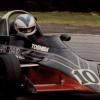
F1 Historical Power to Weight Ratio
#1

Posted 23 December 2022 - 01:11
Who has the figures from 1985ish to present day?
1988 McLaren Honda 650bhp and 540 kg (1,196 lb)
Advertisement
#2

Posted 23 December 2022 - 02:57
not sure if BHP is the only metric you want to use or also torque
#3

Posted 23 December 2022 - 08:03
not sure if BHP is the only metric you want to use or also torque
I would strongly recommend sticking with bhp and ignoring torque numbers altogether, which can be extremely misleading and only tell part of the story.
Re weights, at what point did they start to include the driver?
The bhp of the BMW turbo of 1984 can be found by the formula 1000 x 1.05^y where y is how many years it's been since 1984.
#4

Posted 23 December 2022 - 08:13
Was thinking about how although bhp may have gone up since 2014 that the power to weight ratio has likely gone far downwards.
Who has the figures from 1985ish to present day?
1988 McLaren Honda 650bhp and 540 kg (1,196 lb)
Are you sure about that ? I thought it was more than that, especially in qualifications.
#5

Posted 23 December 2022 - 09:06
Are you thinking of the BMW turbo engines that lasted one Q lap, the ones the engineers would leave them outside and pee on the blocks to strengthen them or something?
Allegedly a myth but I'm sure a beyond the grid interviewee confirmed it once.
Edited by danmills, 23 December 2022 - 09:08.
#6

Posted 23 December 2022 - 09:15
I would strongly recommend sticking with bhp and ignoring torque numbers altogether, which can be extremely misleading and only tell part of the story.
Re weights, at what point did they start to include the driver?
The bhp of the BMW turbo of 1984 can be found by the formula 1000 x 1.05^y where y is how many years it's been since 1984.
As an engineer, I think exactly the opposite. I think of torque as the rotational equivalent of linear force. With regard to motorsport, when I see HP being used to compare engines its frustrating because HP is meaningless to me unless I know what rpm the HP is calculated from
Edited by GlenWatkins, 23 December 2022 - 09:15.
#7

Posted 23 December 2022 - 09:22
#8

Posted 23 December 2022 - 09:33
As an engineer, I think exactly the opposite. I think of torque as the rotational equivalent of linear force. With regard to motorsport, when I see HP being used to compare engines its frustrating because HP is meaningless to me unless I know what rpm the HP is calculated from
In the 2.4 litre NA era, my very ordinary road car had higher peak engine torque than any F1 car of the day. As you say, you need to know about rpms too, and since hp = torque x revs and gearboxes effectively exchange torque for revs and vice versa, then bhp is the more significant number.
#9

Posted 23 December 2022 - 10:31
Are you sure about that ? I thought it was more than that, especially in qualifications.
Ludvigsen's Classic Racing Engines covers the TAG-P01, saying it had 650 bhp in the 1984 McLaren but by 1987 its typical power in racing trim was 820 bhp, topping 900 in qualifying trim. Peak hp was at 12,000 rpm.
#10

Posted 23 December 2022 - 10:46
Was thinking about how although bhp may have gone up since 2014 that the power to weight ratio has likely gone far downwards.
Who has the figures from 1985ish to present day?
1988 McLaren Honda 650bhp and 540 kg (1,196 lb)
That car apparently also ran with 70kg(?) of ballast.
#11

Posted 23 December 2022 - 14:07
Are you sure about that ? I thought it was more than that, especially in qualifications.
Steve Nichols has said in recent interviews that the MP4/4 had about 600-615 hp in race trim (because of the fuel tank limitation).
#12

Posted 23 December 2022 - 14:30
Table in: https://www.racefans...s-1966-present/
#13

Posted 23 December 2022 - 14:41
For those who prefer graphs to tables

Edited by chdphd, 23 December 2022 - 14:42.
#14

Posted 23 December 2022 - 16:33
That 2005 figure and the last of the v10s and how quick they look is what originally got me thinking about this.
#15

Posted 23 December 2022 - 17:16
Are you sure about that ? I thought it was more than that, especially in qualifications.
No, it's about in the ballpark. The boost limit of 2.5 bar was applied in both qualifiyng and races for 1988. All Honda could do was run the engine richer in qualifying, and stress it more. The numbers I know of were 456KW (620 PS) in race trim and 504KW (685 PS) in qualifying.
#16

Posted 23 December 2022 - 18:40
#17

Posted 24 December 2022 - 15:00
https://vdocuments.m...ine.html?page=1
#18

Posted 24 December 2022 - 16:44
As an engineer, I think exactly the opposite. I think of torque as the rotational equivalent of linear force. With regard to motorsport, when I see HP being used to compare engines its frustrating because HP is meaningless to me unless I know what rpm the HP is calculated from
As an automotive engineer, torque says very little when talking about the speed of a car. Horsepower is everything. As Collombin said, a car with very few torque but an extreme number of revs can pump out lots of horsepower and thus performance. Think of older F1 engines, but also 2-stroke karting engines that rev over 15k rpm. Engines with very high torque but a low number of revs can maybe pull a lot of weight, but aren't quick. See freight trucks.
#19

Posted 24 December 2022 - 18:29
As an automotive engineer, torque says very little when talking about the speed of a car. Horsepower is everything. As Collombin said, a car with very few torque but an extreme number of revs can pump out lots of horsepower and thus performance. Think of older F1 engines, but also 2-stroke karting engines that rev over 15k rpm. Engines with very high torque but a low number of revs can maybe pull a lot of weight, but aren't quick. See freight trucks.
Gearing exists for a reason.
Advertisement
#20

Posted 24 December 2022 - 22:01
#21

Posted 24 December 2022 - 23:44
As someone mentioned, the old NA F1 engines had basically no torque at all, and it didn't really seem to matter that much.
It's true in a absolute sense that the classic F1 engines has little torque, as HP was always the primary goal. Within those constrains however, I remember many discussions how useful it was to have a little bit broader operating rev band (related to torque) than your competitors engine, while peak HP might have been similar.
#22

Posted 25 December 2022 - 13:53
It's true in a absolute sense that the classic F1 engines has little torque, as HP was always the primary goal. Within those constrains however, I remember many discussions how useful it was to have a little bit broader operating rev band (related to torque) than your competitors engine, while peak HP might have been similar.
I wonder if that matters at all today as drivers probably have instant, massive torque available from the electric motor at any rpm?
#23

Posted 26 December 2022 - 21:07
It's true in a absolute sense that the classic F1 engines has little torque, as HP was always the primary goal. Within those constrains however, I remember many discussions how useful it was to have a little bit broader operating rev band (related to torque) than your competitors engine, while peak HP might have been similar.
I do remember in the 2004-2005 era people saying that while the Renault V10 had less bhp than the Ferrari and Mercedes, it had a wider operational rev range by a little bit so it was more driveable and thus not losing much on absolute laptime.
#24

Posted 26 December 2022 - 21:12
It's true in a absolute sense that the classic F1 engines has little torque, as HP was always the primary goal. Within those constrains however, I remember many discussions how useful it was to have a little bit broader operating rev band (related to torque) than your competitors engine, while peak HP might have been similar.
I think it's more that those small displacement engines lacked torque, so the only way to do anything was increasing the revs.
The torque vs peak power balance was best illustrated in the V8/V10/V12 era.
#25

Posted 26 December 2022 - 21:55
I do remember in the 2004-2005 era people saying that while the Renault V10 had less bhp than the Ferrari and Mercedes, it had a wider operational rev range by a little bit so it was more driveable and thus not losing much on absolute laptime.
Yep, that's what I meant.
#26

Posted 26 December 2022 - 22:56
Watching highlights of a 1988 race today and NA cars were 500kg and Turbo 540kg not including driver.
#27

Posted 27 December 2022 - 17:44
Torque at Engine Crankshaft is a measure which cannot get compared between different eras, as it gets transformed with the gearing. It's torque at the wheels (or rather the propelling force at the tyre - surface contact) that is important, and therefore the power (bhp)of the engine that should be compared.
For driveability and when upshifting, of course a flatter torque vs. RPM is a good thing (which again leads to a flatter power curve).
#28

Posted 27 December 2022 - 17:45
No, it's about in the ballpark. The boost limit of 2.5 bar was applied in both qualifiyng and races for 1988. All Honda could do was run the engine richer in qualifying, and stress it more. The numbers I know of were 456KW (620 PS) in race trim and 504KW (685 PS) in qualifying.
julklapp.pdf (free.fr) The very interesting SAE paper about this fantastic engine. Osamu Goto et al...
#29

Posted 27 December 2022 - 19:51
julklapp.pdf (free.fr) The very interesting SAE paper about this fantastic engine. Osamu Goto et al...
That's where I had my numbers (620/685HP) from! ![]()
#30

Posted 29 December 2022 - 10:05
I think it's more that those small displacement engines lacked torque, so the only way to do anything was increasing the revs.
The torque vs peak power balance was best illustrated in the V8/V10/V12 era.
Huge torque isn't really desirable in an F1 car - it delays throttle input from the driver and leads to some squirrelly moments in slow corners.
Compare 2013 to 2014. Rosberg mentioned at the time that electric deployment was often quite sudden and the driver was somehow expected to just deal with it. We saw a lot of power slides that year, and unexpected spins.
In 2008, McLaren even had a torque limiter paddle behind the steering wheel, which the driver could use in slow corners, and allowed them to stamp the throttle while holding the paddle for better traction and acceleration.
#31

Posted 31 December 2022 - 00:22
2026 will be worse.
The power units are the same weight as today's, but will have less power available most of the time, though the peak power will be about the same (~1,000hp).
#32

Posted 31 December 2022 - 09:51
Torque is not a good judge of speed. F1 cars aren’t pulling trailers.not sure if BHP is the only metric you want to use or also torque
Says it all that if a car ran a CVT, you’d run the engine at peak bhp and not peak torque.
Edited by Ali_G, 31 December 2022 - 09:52.
#33

Posted 01 January 2023 - 08:38
I do remember in the 2004-2005 era people saying that while the Renault V10 had less bhp than the Ferrari and Mercedes, it had a wider operational rev range by a little bit so it was more driveable and thus not losing much on absolute laptime.
Yes - this is why they were able to run a 6 speed transmission (and win a championship with one) when every other team had been running 7 speed since (the late 90s?)
#34

Posted 01 January 2023 - 16:48
As someone mentioned, the old NA F1 engines had basically no torque at all, and it didn't really seem to matter that much.
With cars being so low, so lightweight, so aerodynamic, and with so much power, you don't need that much torque. The general speed and acceleration was really high and that's what really matters.
Old turbo cars of the 80s had a lot more torque than NA but if you used all of the torque usually meant lots of wheelspin. Those were also the highest in terms of weight/power ratio, at least the ones used in qualifying, some of them seemed to reach 1500 bhp with weight around 600 kg or a bit less




























